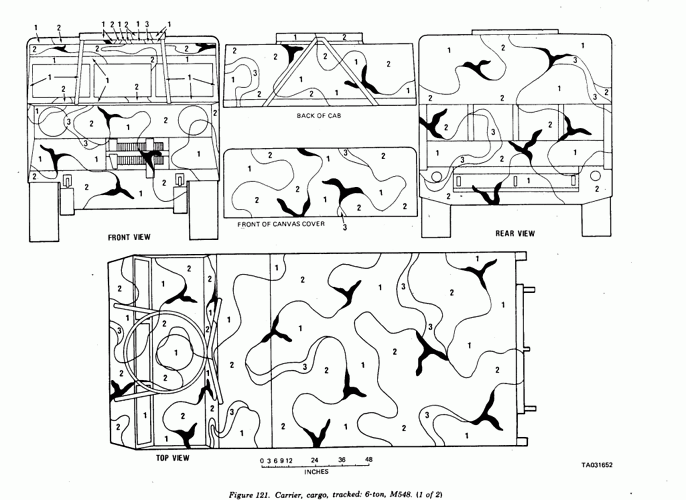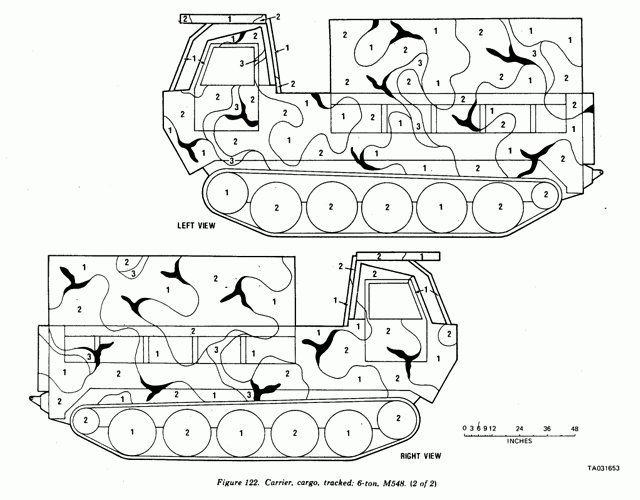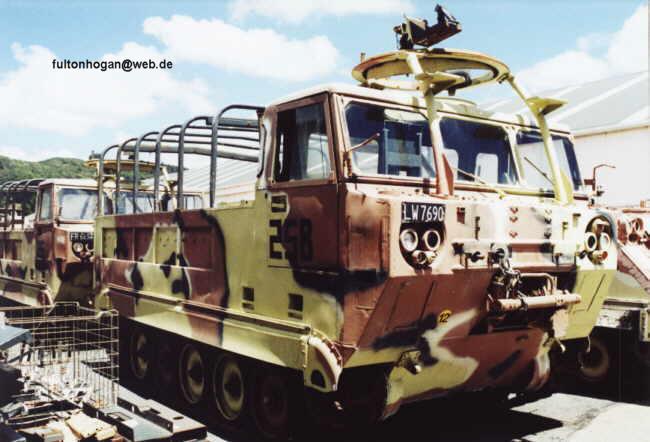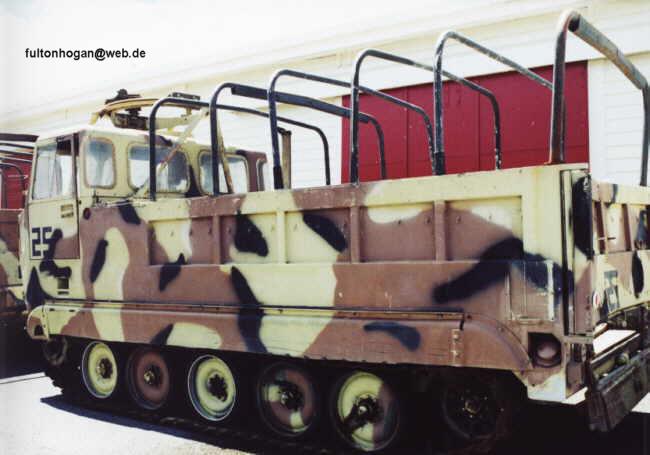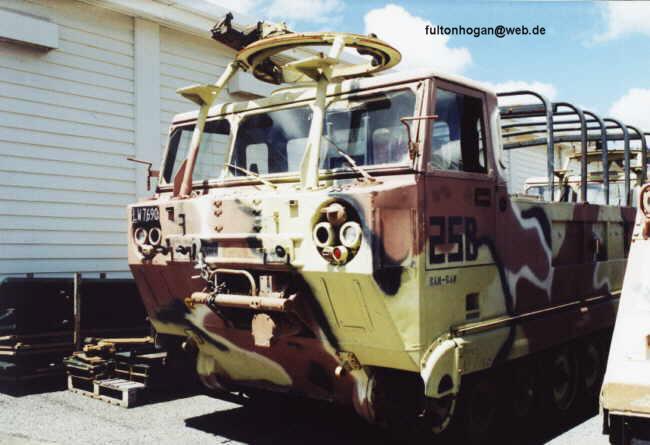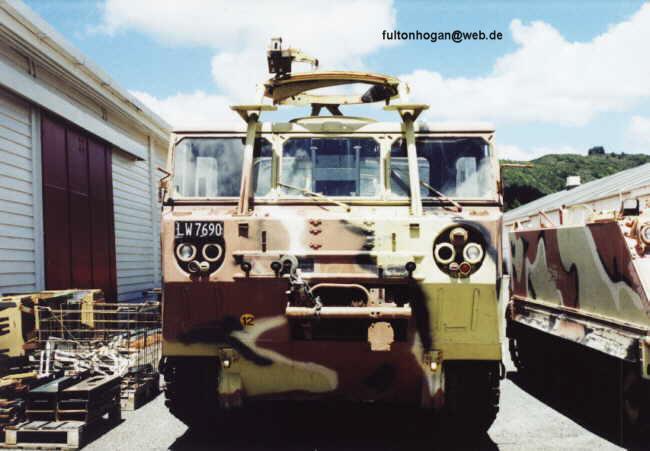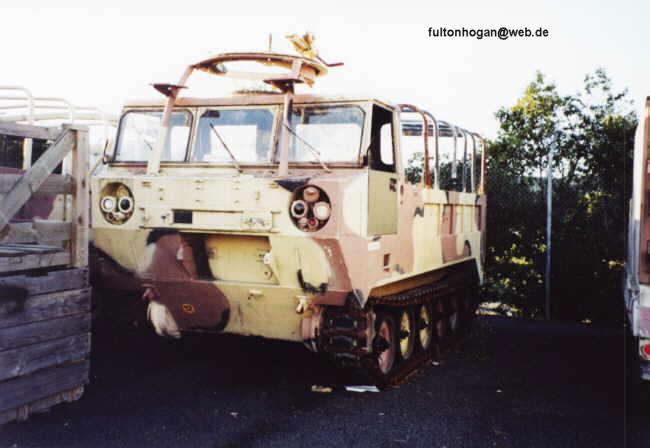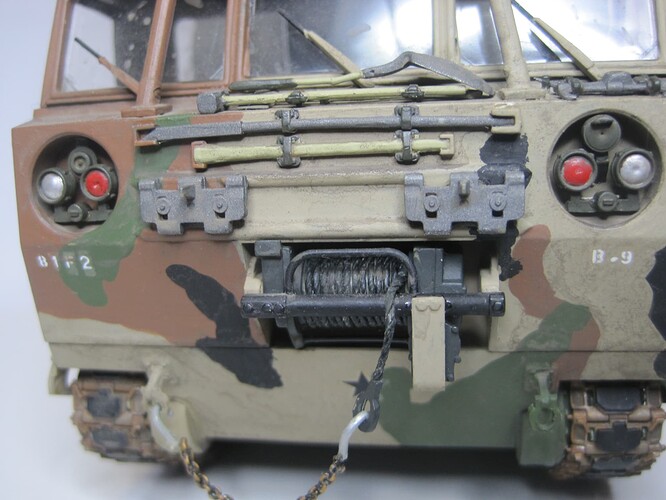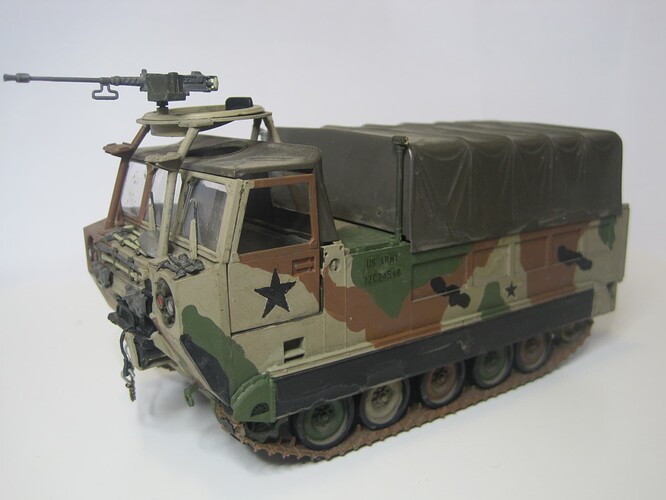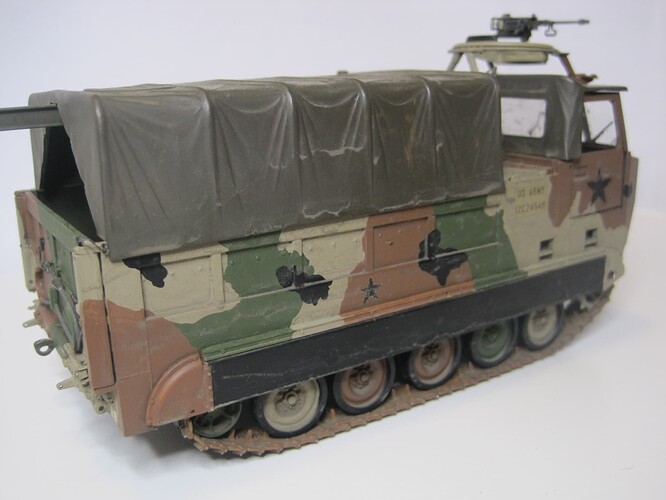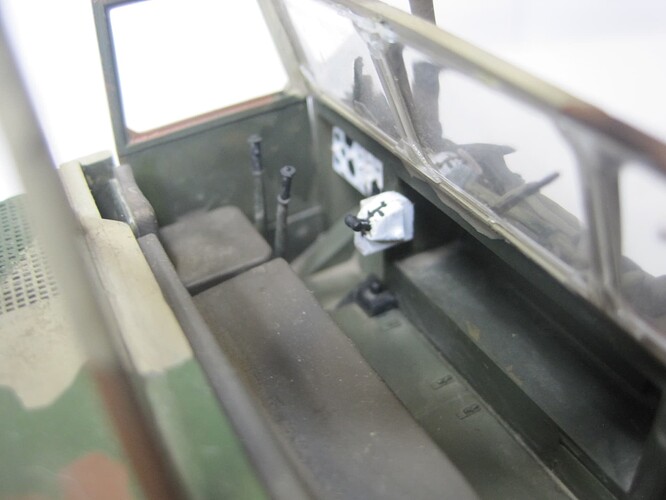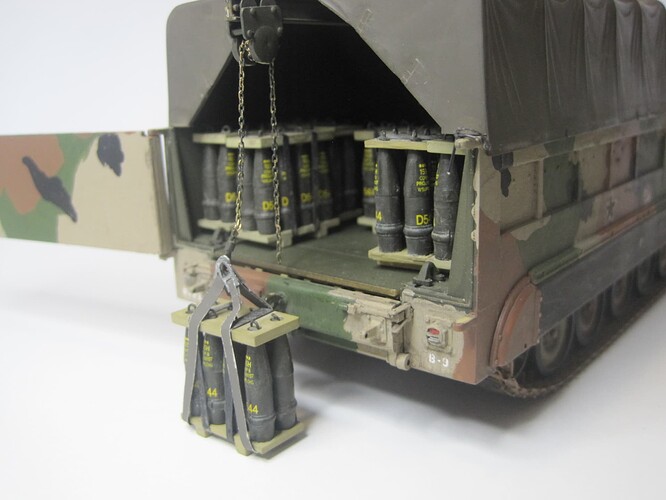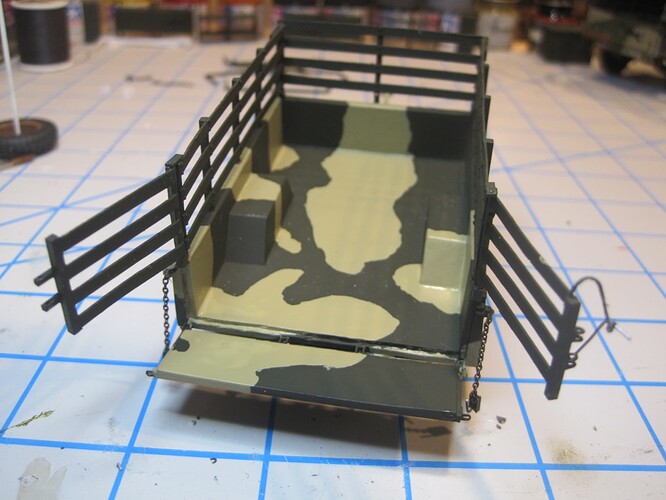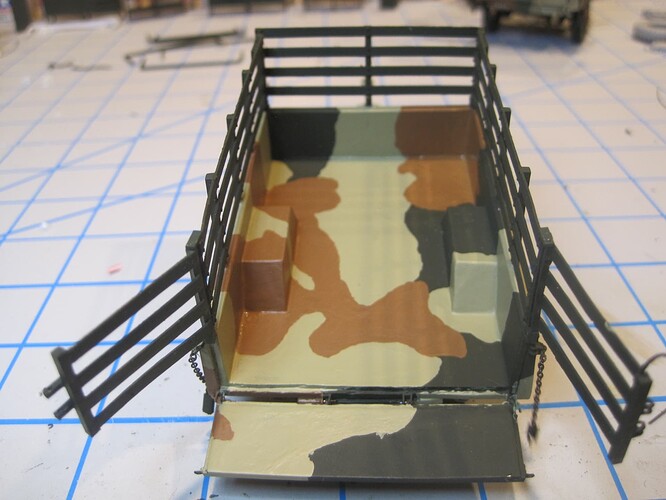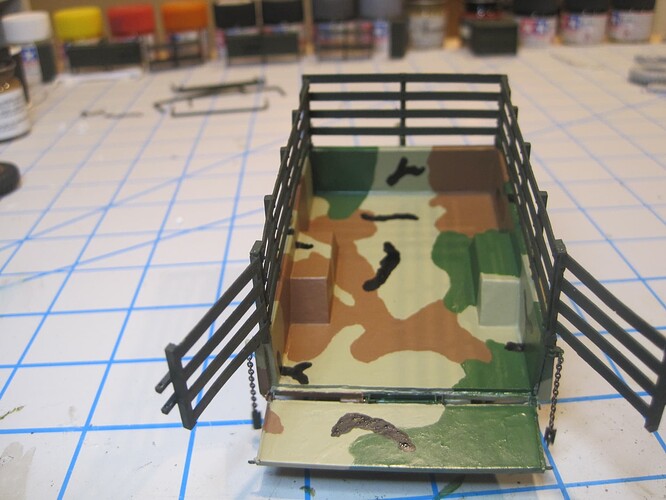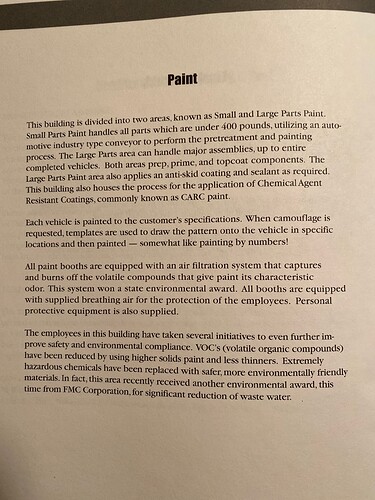I’m 99% done building an AFV Club M548. I want it to represent a US vehicle. I really would like to paint it something other than Sand or NATO camouflage. The MERDEC pattern looks pretty bad imo. Not MERDEC in general,
just the official pattern for the 548. I was hoping to find some pictures of one in the MASSTER camo, but no luck. I’m currently leaning toward NATO 3 color. Not opposed to it based on appearance…just wanted to do something different with mine. Any suggestions/opinions?
Well, you’re in luck; the 548 has been around for a long time and painted in lots of different patterns. You can do it in Vietnam OD if you want, or anything after that. MASSTER was used on it. The Tankograd book on MASSTER, MERDC, and DUALTEX has color photos of an M548, as well as M730 Chaparral vehicle, M752 Lance (same basic vehicle) and of course, the good ole M113.
If you are interested in other countries, there are tons of camo schemes, including Australian.
Ken
If you are not totally set on US… an Australian AUSCAM one might be something different for your collection:
http://www.grubbyfingersshop.com/walkaround_galleries/M548%20Tilley%20Walkaround%20177071%20Bandiana%202014/content/index.html
Jack,
The excellent Tom Hathaway undertook a project depicting every last vehicle/equipment from his unit back in the day, all in MASSTER; see 1st Battalion 2nd Field Artillery in MASSTER
This includes an M548 which I’m sure you’ll find in due course (a fair bit of scrolling I recall). Anyway, that should be enough for your purposes in replicating a MASSTER-finished vehicle.
Thanks for the complement Brian.
Jack, to keep you from having to scroll through that entire thread, here are a few shots of the M548 in MASSTER. These are from my old unit in the 8th Infantry Division, but if you’re doing a USAREUR vehicle there are dozens of other units which could be represented. There were 4 battalions in each of the full divisions and then there were well over a dozen more when you consider all of the battalions in brigades in the two Corps Artillery units and the two ACRs, not to mention the separate maneuver brigades. Plus I’m not sure but the M548 may have been used with other than FA units as well, so lots to choose from.
Beautiful. Thanks!
That is excellent!
Thanks. A couple of things to consider when doing MASSTER. The patterns provided usually resulted in mostly similar designs being applied to similar vehicles. For example all of the M548s in a particular battalion would probably have a very similar location, size and shape for the various colors. Other batallions elsewhere would also probably be “close” but there would have absolutely been some variations from unit to unit. So NOBODY can say that the paint job on a particular vehicle is “wrong” unless the colors are WAY off or the rough patterns are totally out of whack and they have photos of the EXACT vehicle you’re representing with your model which show a different configuration. Right!
The OTHER important thing to remember is that initially all these vehicles were painted at the unit level, usually by the individual crews, and done BY HAND in almost every case. OD vehicles were outlined in chalk, numbers 1-4 were filled in and then it was paint by number!
So the paint job should absolutely NOT have to be done by masking and spraying! Hand brushing and rough outlines are exactly the way the real vehicles were!!
You sold me on it. However, I’m terrified of brush painting patterns on vehicles. I suppose I could practice on something else.
That’s exactly the beauty of MASSTER. There’s a tendency to avoid hand brush painting, because it looks so crude and you can see the brush strokes. Guess what? If you want to make a MASSTER painted vehicle appear accurate, that’s EXACTLY how it should be done.
And you literally can’t screw it up! Paint an irregular blob with wavy edges and fill it in. Paint another blob in the next area. Do they over lap? Doesn’t matter! Is it a bit sloppy on the under sides? Guess what. Joe Snuffy, Private E-2 was painting the actual vehicle in the motor pool, by hand, probably with a 4" brush!
This was always intended as a “field applied” paint scheme, not factory or depot.
Here’s a sequence on another vehicle:
Spray a base colour by all means (for my MASSTER projects I normally use a Tamiya rattle can of Deck Tan), thereafter, as Tom describes, it’s really quite simple; an awful lot of military tasks are undertaken by soldiers who don’t really want to do them. Be bold! However, a practice run on say, an old modelling hulk or even some card might help.
Good luck!
Tom,
What you say reminds me of a trip to the Lima Tank Plant in Ohio. Over by the paint shop (think they called it a shed) was a column of flat bed rail cars loaded with Abrams tanks. Every one looked similar right down to the paint. I always figured they were painted with robotic paint sprayers to give the exact same pattern. Remember saying to myself that it looked like a train load of snakes! Never was allowed in the paint shed, so have no idea what they did.
gary
I never got to the Lima Plant while I was working for PEO Ground Combat Systems, but I did spend 30 years working for Ford. I can pretty much guess that the tank plant also used robotic sprayers. It’s cheaper, more reliable and consistent, and probably safer as well.
It’s certainly safer for humans to have a robot do it. Per the TM, full protective gear is supposed to be worn when applying CARC paints because the stuff is carcinogenic.
I was able to get into the United Defense plant in York PA back in the fall of 1996 on a tour, they used aluminum frames which bolted to the vehicles to chalk the patterns on then sprayed by hand. Here’s the pertinent page from the brochure.
I was in the 11th ACR 87-90 in West Germany and ALL of our vehicles were just painted Forest Green.
Rodger Smith bought the first robotic paint spraying system ever put in use (yes that Smith). It took them almost three years to get the bugs worked out of it. I visited that plant back in the eighties, and when I got back I told the boss to stay away from that place! They had cars with one side painted a different color than the otherside!!! Buick front ends put on Oldsmobiles. A regular nightmare. I was really just getting into robotic designs and concepts, and was trying to learn on the curve. I think Warren Tech finally got the spray both working right, but it was too late to save Rodger’s job as Chairman. Perot finally got him removed right after he left as well.
A trip thru the Lima plant first made you think “I’ve never seen so many welders in one place!” I knew the maintenance superintendent very well, and we were always trading ideas on how to make things work better. First time I met him was when he drove over at TACOM’s invite. Just walked into the swamp and introduced himself. He was a good man who needed to get out of there and move to an automotive plant for a serious raise in pay. Thru him I had an open invite into Lima, and he always conducted my tour.
One thing you learn about robotics is that a lot of the claims are scams in certain fields of work. I visit to the radiator plant in New York saw issues slap me in the face. (later resolved to a certain extent). At that same time I was building the world’s largest robotic cell with very little knowledge on the concepts. I had Warren Tech helping me day & night, and they’d send me here and there. We all were learning off each other, and Fanuc wasn’t much help either. What we later pulled our hair out was the part of marrying magnetics with digital, and then adding KAROL (later done away with). In otherwords three foreign electrical systems (two were easy, but that last one was a bear). Add to this was we designed the first robotic tool change system for the arm. In the end the idea was to do away with three jobs at a faster pace. When it was all said and done we added four or five jobs to increase the output 33%!! I called it a failure.
gary
Great to see the reference. Sure wish somebody could find a copy of the USAREUR, or the two Corps Regs which authorized the painting of vehicles in Europe in the MASSTER scheme in 1973. They seem to have disappeared off the face of the earth with the exception of the appendix which has the actual patterns.
I guess if you only had one part, that’s the best one to have!!
Yeah the schemes varied over time. When I arrived in 1972 everything was solid OD, and MASSTER came in during the summer of 1973. Some time in the late 70’s they started implementing other schemes. I think the Tankograd book has a pretty good history of how and when they varied.
Welcome to the Forum!!
